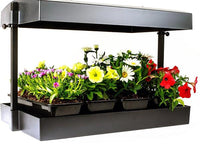You can start planning an amazing 2021 harvest for your outdoor grow right now. Soil preparation, even in the winter months, is a great way to begin the process. So is composting.
If you’ve been wondering what to do after harvest, here are some ideas.
Add Compost with Winter Covering to Your Beds
Have you been saving up compost? Your outdoor beds will be more than happy to take it during the winter months.
Dump the compost on the soil’s surface and cover it with cloth, a tarp, or linens of some kind. The cover will help protect the soil from rain, which can compact the soil.
You may want to add some extra insulation like newspaper or leaves to keep the interior of the compost layer warm enough to decompose.
When it’s almost time to plant your girls, take the cover off and give it a few days.
Don’t add any compost to your beds until the compost is partially decomposed.
Try Winter Composting in a Bin
If you don’t want to put compost on your beds in the winter, you can use a compost bin.
Be sure to insulate and cover your compost so that it decomposes properly. You can also use a large, insulated container to store it.
In super-cold climates, you’ll probably just want to keep it in an insulated container and store it in a shed or garage.
Don’t forget to follow best composting practices. Compost piles require some care and maintenance. To make this process easier, consider a compost tumbler.
Tumbler manufacturers like to say that tumblers dramatically increase composting speed. They might not do that. What a good tumbler will certainly do is make your life easier than it would be if your main tool was a pitchfork.
Proper storage and maintenance will give you soil-ready compost in roughly 10 weeks.
Grow Winter Cover Crops

Cereal Rye
Rye berry, aka cereal rye, is a great soil-rejuvenating cover crop you can plant well into autumn in many places. It prevents erosion, stores unused nitrogen, and suppresses weeds. If you’re lucky, you may be able to find good seeds in the grocery store.
Wheatgrass
Wheatgrass is an excellent (and ultra-healthy) cover crop you can grow through the winter. It just doesn’t germinate well in winter, so you need to plant it in early autumn or start it up indoors.
Winter Legumes
Winter peas (field peas) are great for supplying nitrogen for your spring grow. There are also winter bean varieties that do the same. Learn the best times to plant them in your area. Normally, mid-autumn is ideal.
To get the most nitrogen out of peas or beans, you need to cut them down before they have a chance to flower in the spring.
Ask a Growing Expert









